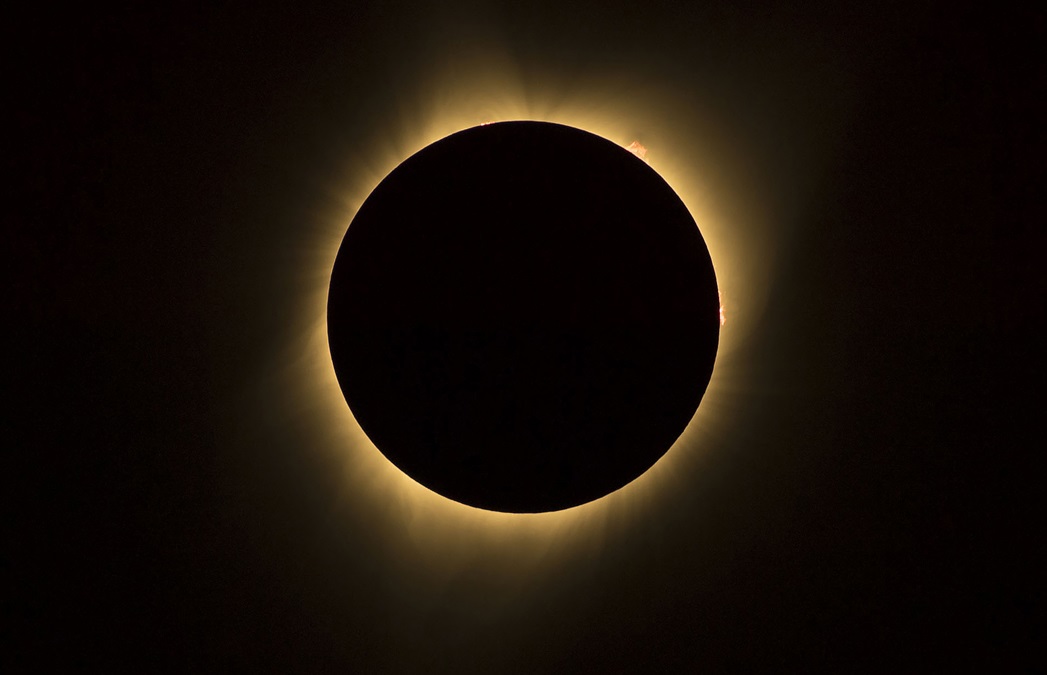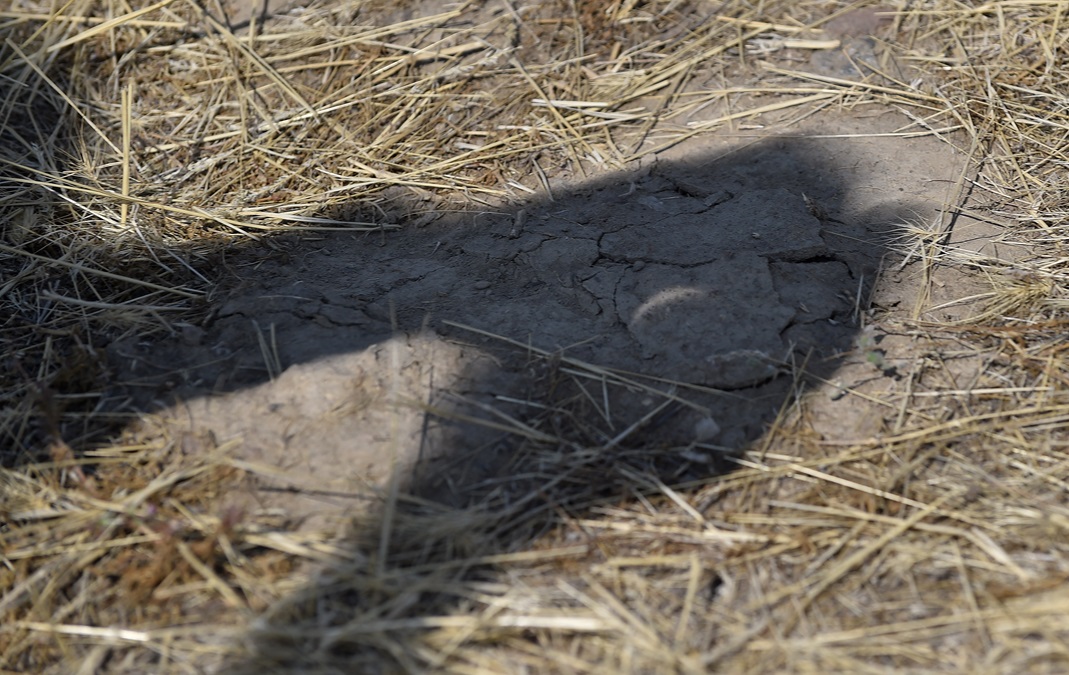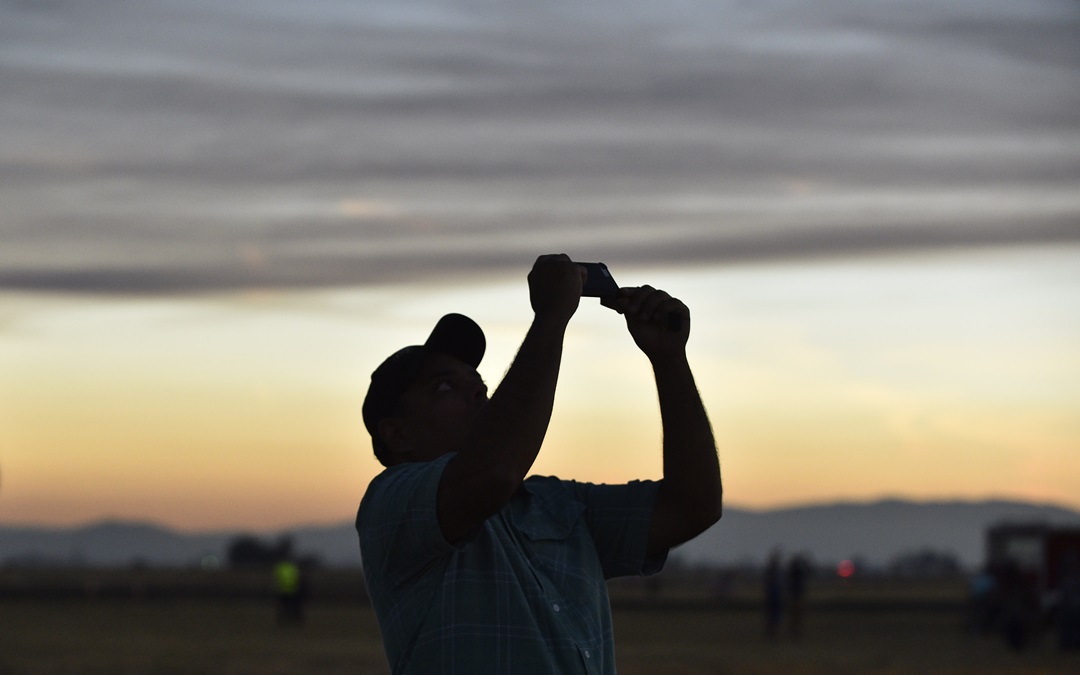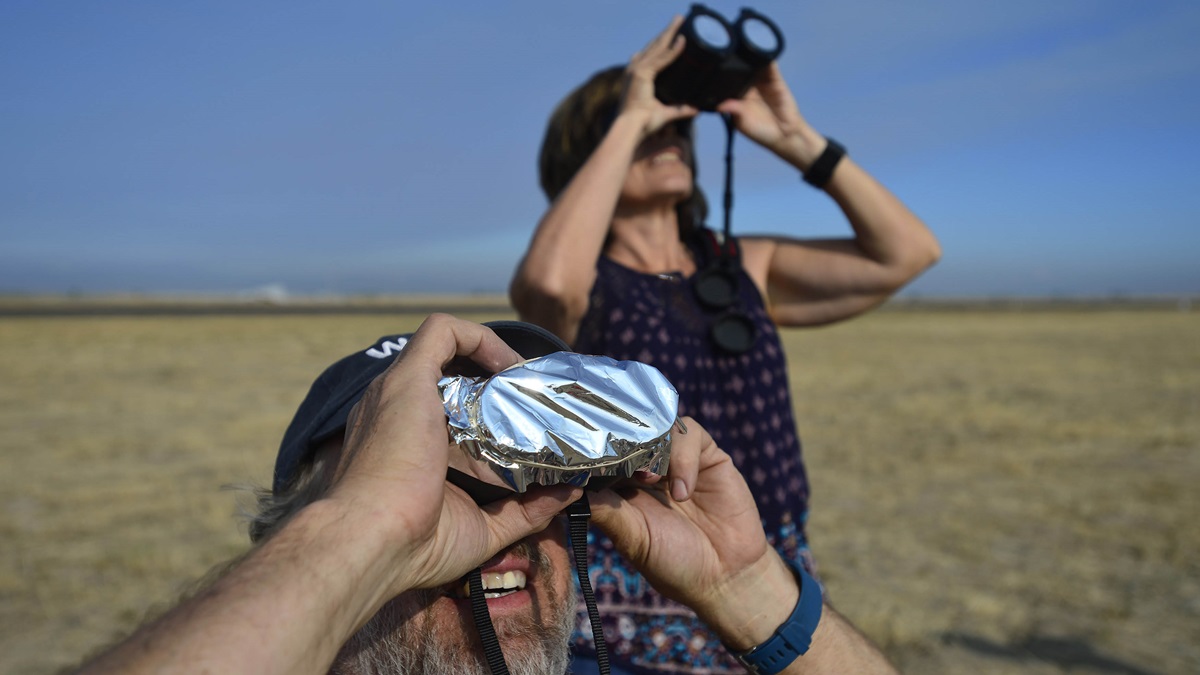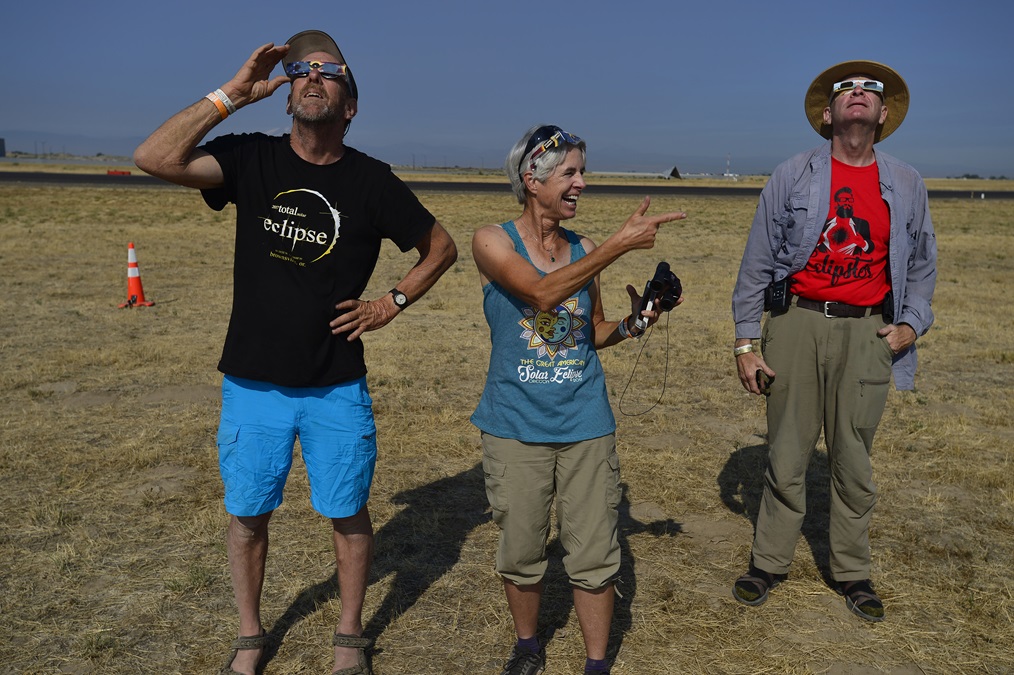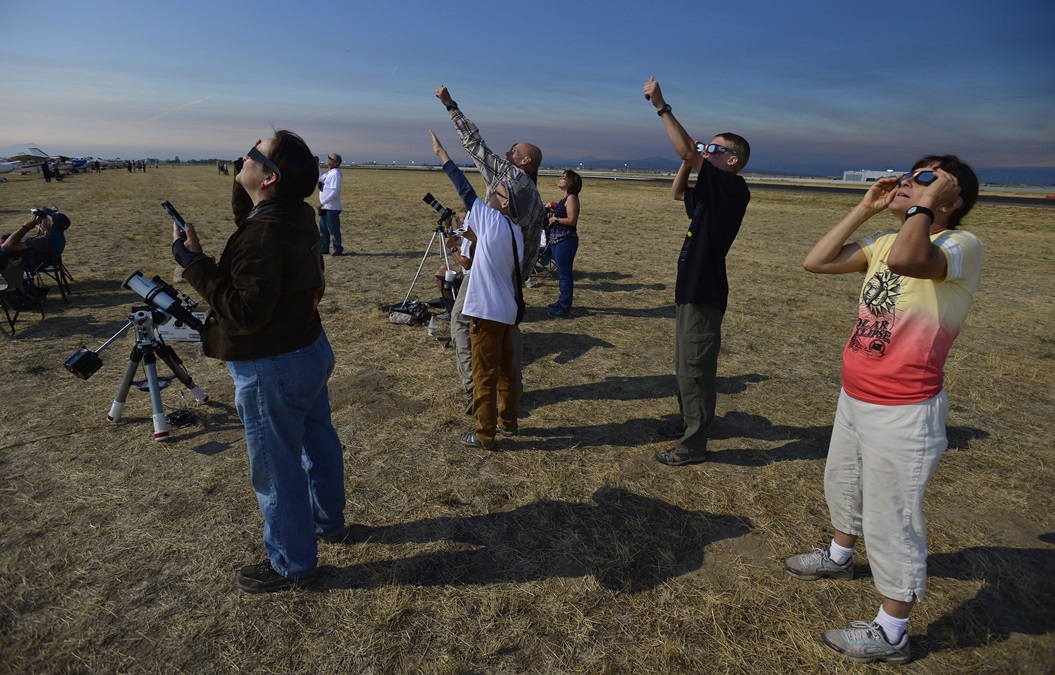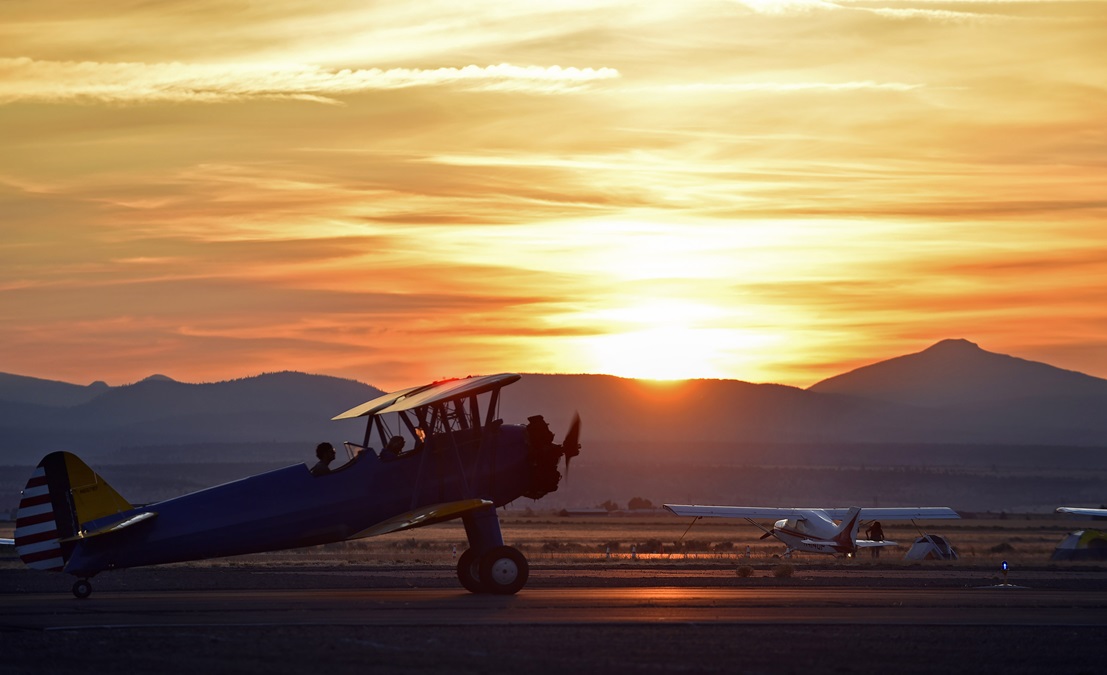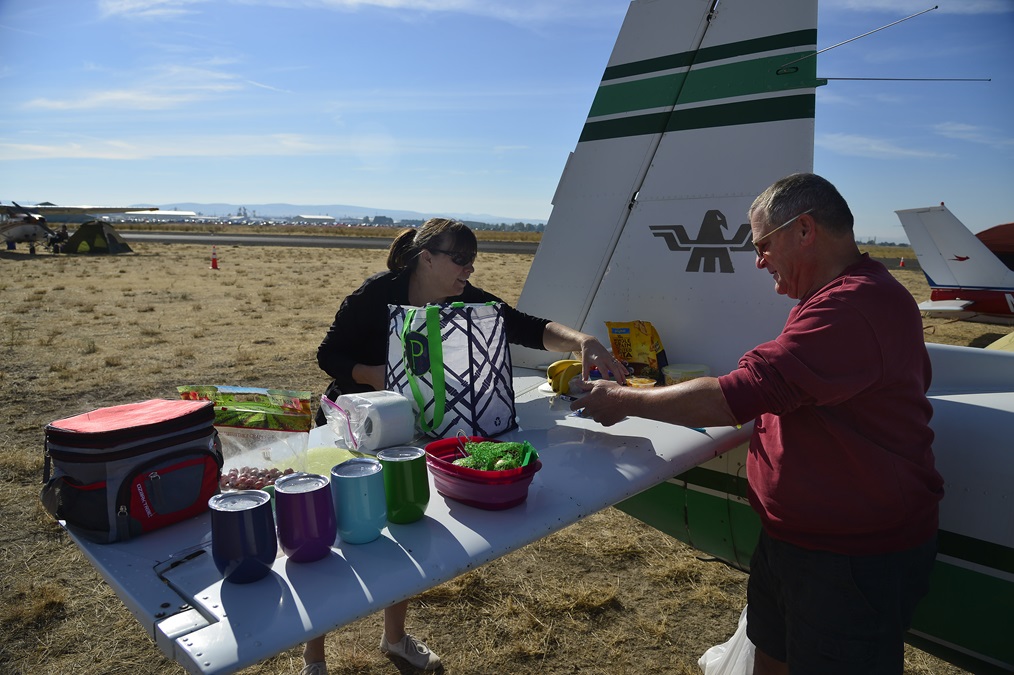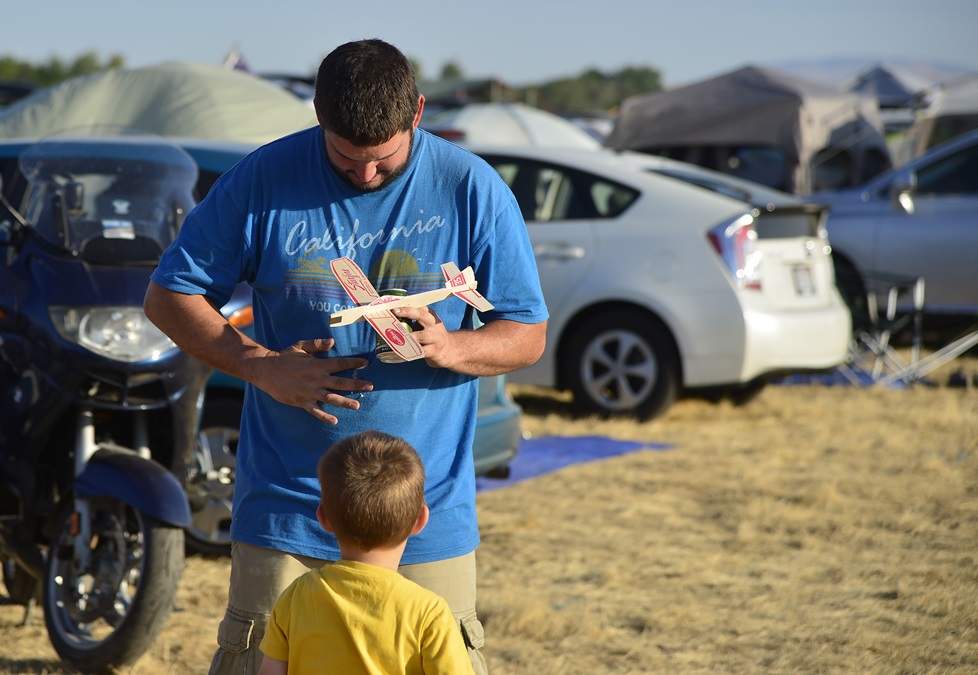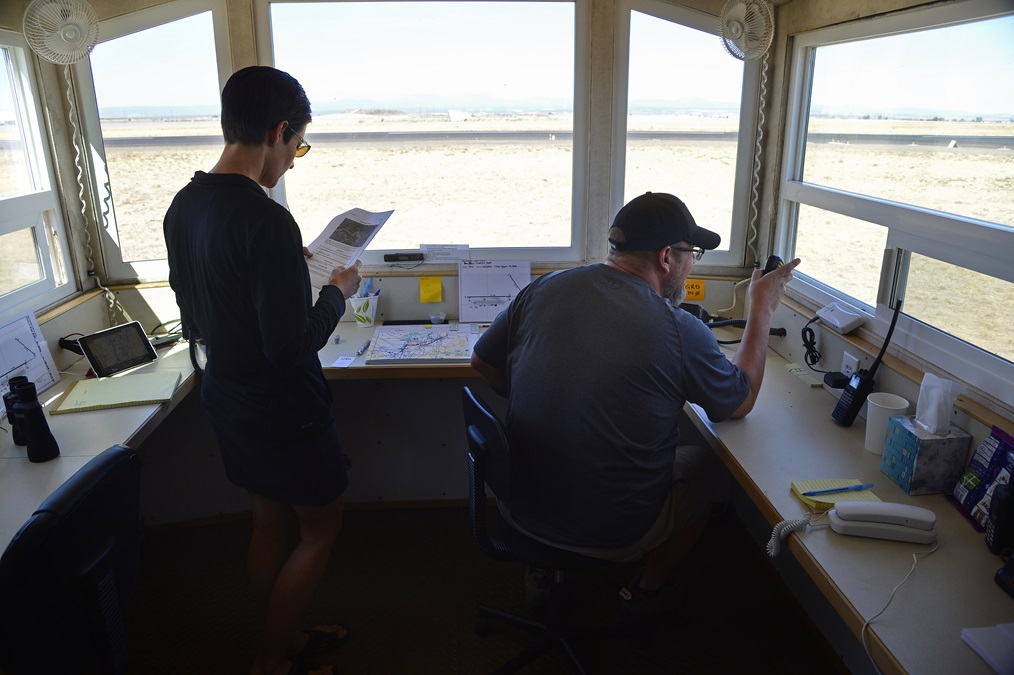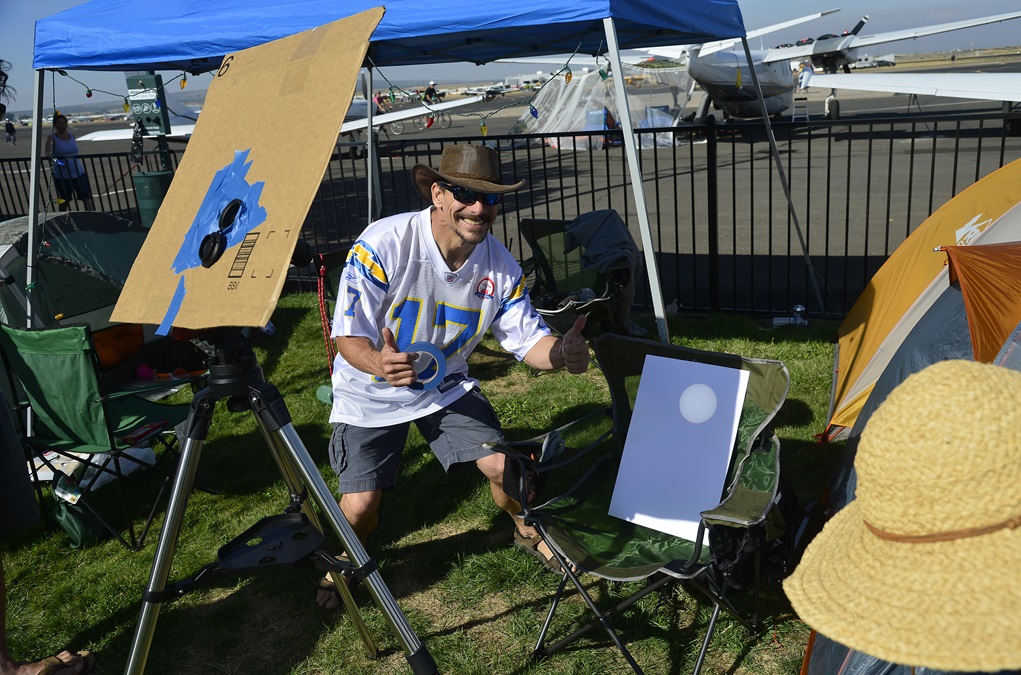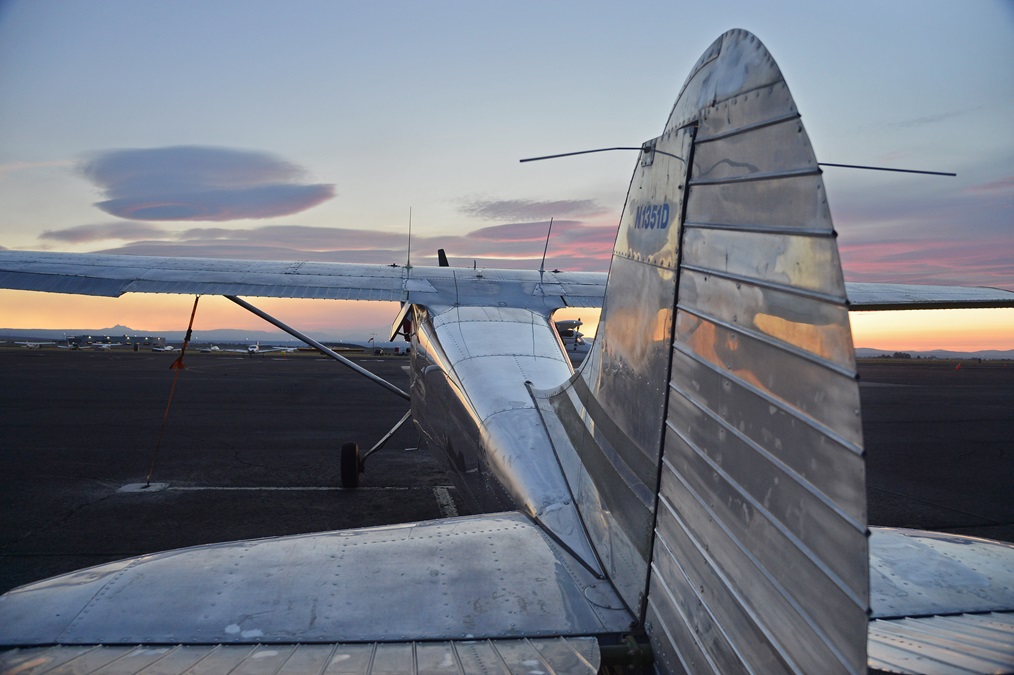Total solar eclipse draws thousands of aviators
More than 240 airports in path of totality
Aviation took center stage as a total solar eclipse swept over the United States Aug. 21, plunging parts of 14 states into daytime darkness for the first time in 99 years. Pilots offered firsthand reports of the once-in-a-lifetime event from more than 240 general aviation airfields within the 70-mile band of totality.
Depiction of FlightAware's recorded air traffic through the path of totality during the 2017 eclipse. Image courtesy of FlightAware.
Siletz Bay State Airport on the Oregon coast was the first airfield affected by the solar phenomenon, although predicted coastal fog steered scores of pilots inland. Amateur astronomer and Tucson, Arizona-based Cessna 172 pilot Michael Magras calculated that eastern Oregon provided the most advantageous viewing location. He was one of more than 400 pilots who flew to Madras Municipal Airport for the eclipse, which started at exactly 10:19 a.m. Pacific Daylight Time as the moon took a notch out of the sun’s illuminating sphere.
As the disk covered more and more of Earth’s star, eclipse watchers were sure to note “some really cool things,” said Magras. The phenomenon known as Bailey’s Beads formed when the sun’s rays shone through valleys and ridge lines on the moon’s edge. That leads to the next stage called the Diamond Ring, when “one by one, the Bailey’s Beads disappear and we get that one bright spot on the circumference of the moon that looks like a lady’s diamond ring.” It was formed when sunlight peeked out from “the deepest valley on the moon’s surface.” The next stage was signaled by “red solar prominences and flares coming out from the sun’s edge,” added Magras. “That’s hydrogen gas being spewed out of the sun and arcing up over the surface,” resulting in a glowing red color.
When the sun’s prominences are totally covered, “we’re left with the beautiful corona,” explained Magras. “The charged particles of the solar wind that flow out of the surface of the sun are carried by the magnetic field lines of the sun.” The shape of the corona is “determined by the magnetic field at that particular moment. No two solar eclipses will look the same,” he noted. “Every one will be different—with its own fingerprint of the magnetic field lines and the solar winds flowing out from the sun at that particular time.”
Magras uses astronomy and aviation to teach Arizona high school students about science, technology, engineering, and math (STEM) concepts. “I thought this [the eclipse] could be used to educate youth. It’s a gateway for engineers and scientists and we need more engineers,” he noted. Before she retired, his wife, Wendy, spent her career as an engineer at aviation powerhouse Raytheon.
When the sky turned from cobalt blue to steely gray at precisely 10:20 a.m. Pacific Daylight Time, cheers erupted from aircraft campers at Madras. Solar prominences revealed themselves in blobs of glowing red gas spewing from several areas of the sun’s perimeter, a rare visual event that is normally obscured by the star’s extreme brightness. Temperatures dropped enough to briefly send shivers through t-shirt clad aviators and it confused nighthawks which prowled the sky above Runway 34 in search of tasty bugs.
“Oh, my goodness,” shouted an excited Magras, who was weathered out during a 2009 solar eclipse trip to China. “It’s beautiful!”

NASA’s Kristen Erickson, who spoke to AOPA from her vantage point at Madras Municipal Airport, pulled together NASA’s “Eclipse Across America” coverage that ushered in science experiments, safety procedures, photographic tips, and expert commentary from specialists based at universities, museums, festivals, parks, and other public gatherings. She said that the solar event could propel youth studying the event and its many experiments toward aerospace careers. Erickson said pilots in a Gulfstream III orbiting Washington state would be the first pilots to see the solar phenomenon; three time zones later a U.S. Coast Guard ship launched the space agency’s last experiment from the Atlantic Ocean, just off the South Carolina coast.
AOPA has recognized the importance of growing the pilot population, and the association has put several programs in place to ensure a robust future for aviators. The goal of AOPA’s You Can Fly High School Initiative is to help build and sustain aviation-based STEM programs and provide a quality workforce to the aviation industry.
Crowds began gathering in Madras throughout the weekend, and the anticipation built to a fever pitch on the eve of the eclipse. A steady line of traffic made its way down Highway 97 toward multiple viewing areas in and around the city of 6,500, favored for its clear skies.
“We are so glad we did this,” said Grumman Tiger pilot Eileen Burger who hugged husband Steve Matson as they shared the special private moment.

Every conceivable parking spot on the ramp and in the grass was taken by aircraft, and airport officials expected a last-minute onslaught of business jets “with very important people” just after sunrise.
The scene was similar at other airfields around the U.S.
“We had them parked three rows deep with 100 aircraft per row, on the grass with tents, on the ramp, and just about anywhere else,” said Madras airport volunteer and Cessna 210 pilot Gary Miller, who prowled the grounds with a Dr. Seuss hat and green-and-purple flashing aviator goggles. “And that’s before the 75 heavies, Gulfstream 650s, and every Cessna Citation ever made” descended on the airfield just in time for the solar spectacular.
Aviation buff Mardeen Gordon of Santa Cruz, California, who camped out across from the airfield, bonded with pilots viewing the spectacle from their aircraft.
“We are so glad we came here. It was such an amazing experience, with lots of cool people,” said Gordon. “Now I want to learn how to fly.”
Listen to NASA's Kristen Erickson explain the solar eclipse in this week's Hangar Talk podcast.

Related Articles
Lights out at Triple Tree
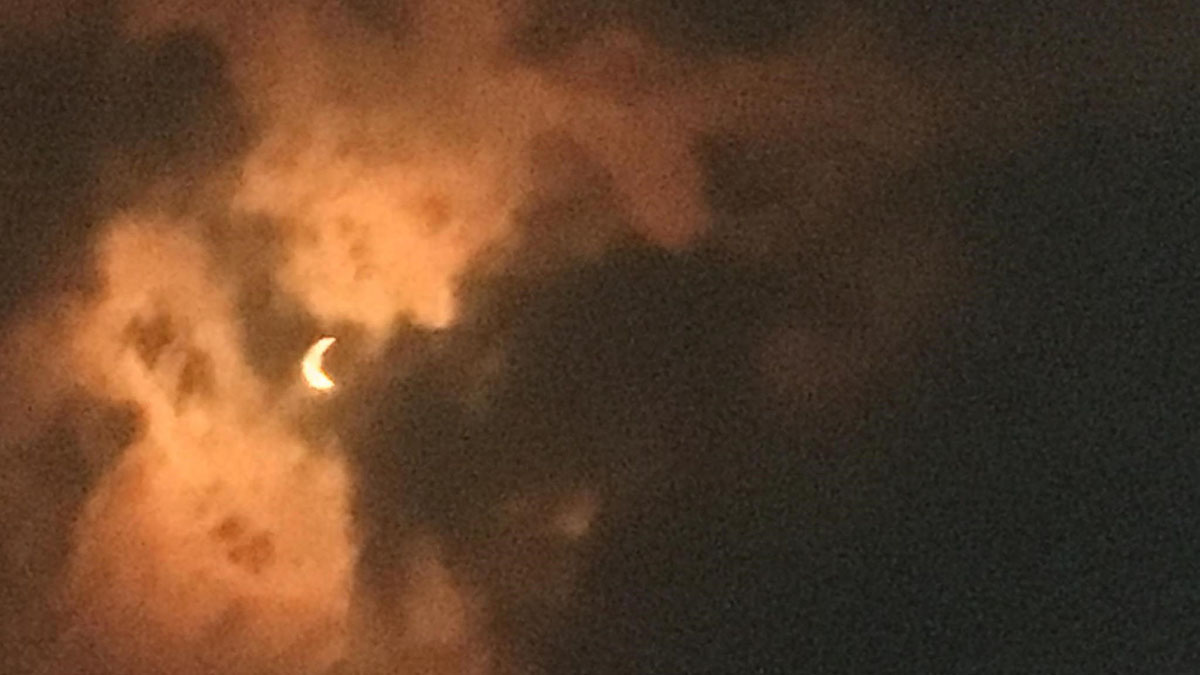
As pilots approached Triple Tree Aerodrome in South Carolina for a total solar eclipse fly-in Aug. 20 and 21, fellow pilots in a control tower welcomed them on the arrival procedure, providing advisories and giving the famous acknowledgement, “Welcome to Triple Tree.” Controllers who typically volunteer at Triple Tree fly-ins had to work because of the expected high volume of traffic in the ATC system for the eclipse.
At Triple Tree, there are only two types of pilots—first timers and returning veterans who have come to love and anticipate a relaxing few days camping under their aircraft wing, fishing, hiking, making new friends, and drinking in the first-class southern hospitality. For these folks, the eclipse just added another element of excitement to a fun weekend.
Sun dims, thermals fizzle
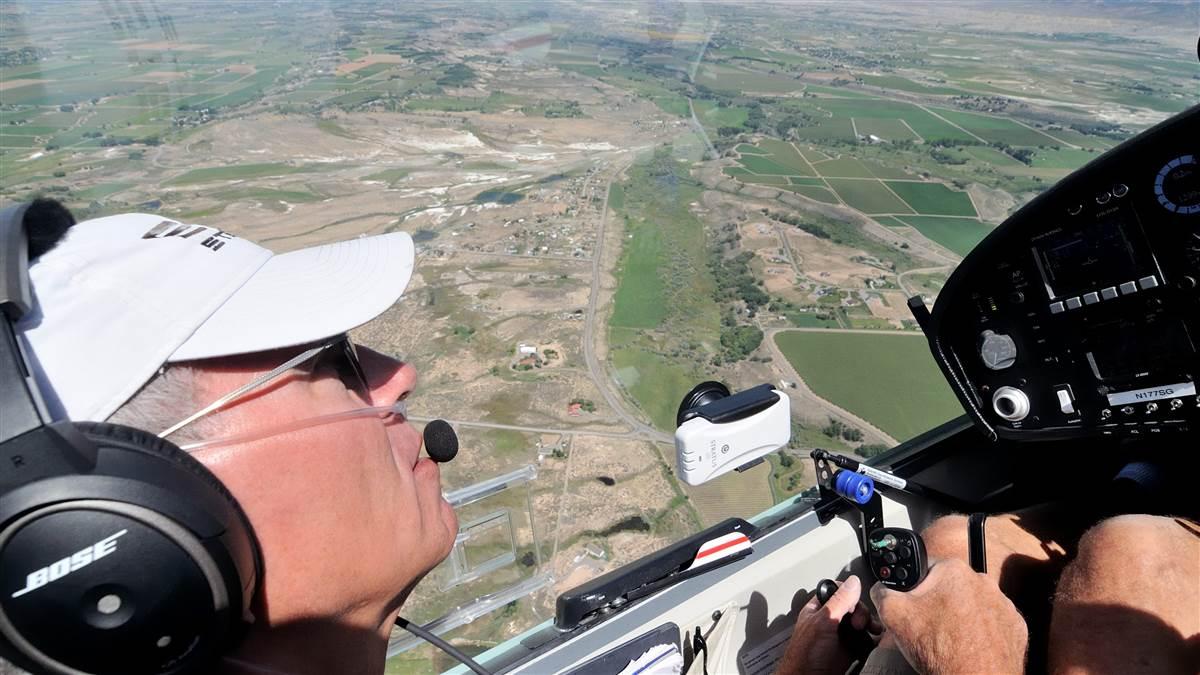
Pilots gathered in Montrose, Colorado, for a weeklong Soarfari, and a pair of Stemme motorgliders headed northeast from Montrose Regional Airport to view the partial eclipse in flight.
The objective was Rifle Garfield County Airport in Rifle, Colorado, where 90 percent totality was expected; Montrose would have only 85 percent coverage.
Solar eclipse with the Eclipse 550
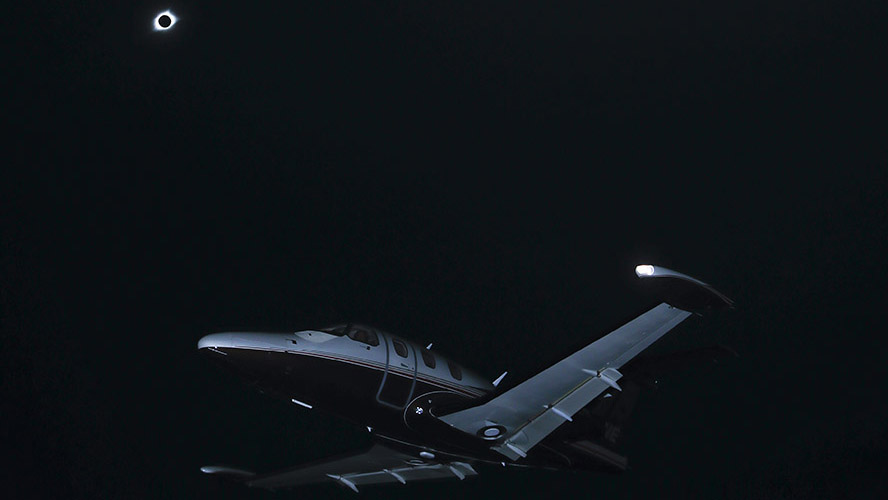
AOPA Editor at Large Dave Hirschman and Senior Photographer Chris Rose pull off perhaps the most remarkable general aviation image of the total solar eclipse: An aerial shot of an Eclipse 550 with the eclipse's totality in the background. Hirschman details how they pulled it off.
